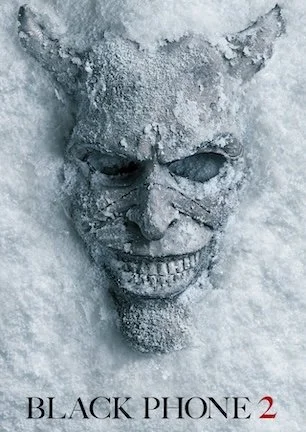Studio: Shudder/Shout Studios
Director: Thomas Hamilton
Writer: Thomas Hamilton, Ron MacCloskey
Producer: Thomas Hamilton, Ron MacCloskey
Stars: Paul Ryan, Sara Karloff, Guillermo del Toro, Peter Bogdanovich, Roger Corman, Joe Dante, Dick Miller, Christopher Hayling, David J. Skal, Gregory Mank, Leonard Maltin
Review Score:
Summary:
Classic movie clips and interviews with filmmakers and fellow actors recount the legendary career of horror icon Boris Karloff.
Review:
“Boris Karloff: The Man Behind the Monster” engaged me at the outset because the documentary doesn’t set itself up as a typical time tunnel biography. Nonfiction films love slow zooms into fuzzy old black-and-white photos. We can usually count on starting with a steady diet of sepia tones while a narrator recites a Wikipedia’s worth of facts beginning at birth and continuing all the way into the subject’s early adulthood.
Not here. “The Man Behind the Monster” begins in 1963 with Mario Bava’s “Black Sabbath.” Historian Sir Christopher Hayling notes how Karloff, who was 75 years old and in poor health at the time of filming, still possessed an uncanny power to immediately morph into a larger-than-life presence the moment he melted into a role. Guillermo del Toro then chimes in with his appreciation for the performance, pointing out the influential parallel that connects Karloff and “Black Sabbath” directly to del Toro’s debut feature “Cronos.”
As the film flows into Karloff’s more-than-memorable voice work in “How the Grinch Stole Christmas,” and atypical turn in Peter Bogdanovich’s 1968 thriller “Targets,” we’re already reminded of the wide scope and far-reaching impact of Boris Karloff’s legendary career. Although he’ll forever be inextricably synonymous with Frankenstein’s Monster, there is of course much more to the real man, and also the many imaginary men (and one woman) he brought to life onscreen. “The Man Behind the Monster” accordingly operates under an assumption that of course viewers already know who Boris Karloff was, and we simply can’t wait to jump into the deep trenches of his extensive filmography. That’s what the movie continues to do after opening credits, rewinding to cover Karloff’s show-stealing breakout in Howard Hawks’ “The Criminal Code” before going straight into specifics about the origin of “Frankenstein.”
Wouldn’t you know it though, not long after I made these notes, the film backtracks at the 30-minute mark to cover biographical basics, complete with slow zooms into fuzzy old black-and-white photos. After all, no retrospective could be considered complete without at least some family background, particularly when it involves complications created by an Anglo-Indian heritage, an abusive father, and the scandal of a brother standing trial for murder. “The Man Behind the Monster” thus embarks on a retracing of steps to recount how William Henry Pratt went against wishes for a career in political diplomacy to become a struggling Hollywood actor, as well as a Canadian farmhand in between.
When I say this section “covers biographical basics,” I do mean basics. Wikipedia lists six marriages for Karloff while “The Man Behind the Monster” puts the total number at five. Whether it was five or six, the movie glosses over almost half of them with a single line of narration that merely says, “two more marriages failed in the interim.” That’s one way to cover ten years of Karloff’s personal life, I guess.
As such, I’m not sure “Boris Karloff: The Man Behind the Monster” truly lives up to its subtitle since the film leans a lot more on the movies than it does on the man. The final third more or less spins into a chronological listing of Karloff’s later roles accompanied by associated clips. Interviewees then reflect upon particular performances, often adding amusing anecdotes about Karloff’s intrusively squeaky leg brace or studio suits concocting charts with supposed secret formulas for financially successful productions. Maybe such things happened. Maybe they’re merely urban legends.
That’s often the way things have to be for films about folks who’ve been dead for over half a century, or would be 134 years old if they weren’t. Since some of the footage was shot over the course of several years, “The Man Behind the Monster” manages to get a couple of kind words out of late actors like Dick Miller, Orson Bean, and Christopher Plummer, who died in 2019, 2020, and 2021 respectively. The last living people who knew Karloff personally don’t exactly have vivid memories of their time together, so there is a limit on how many details can really be dug up at this point.
Whenever a documentary tackles a figure as revered as Boris Karloff, an air of awe usually leads to a lighter look at someone who was undoubtedly more complicated than the mythic idol many put on a pedestal. That’s only a conflict with pivotal historical figures however, not an immortal cinema icon, which is how “The Man Behind the Monster” presents Boris Karloff, and how fans want to see him anyway.
The way I measure a documentary like this is by how much immediate sway it has on upcoming viewing choices. By that I mean, how many of this person’s movies am I now champing at the bit to see? In the case of Karloff, it would be quite a lot. Even if it comes up short on the elucidation side of things, “Boris Karloff: The Man Behind the Monster” succeeds at inspiring renewed appreciation for the actor, as viewers will certainly come away anxious to load up their entertainment queues with familiar classics and overlooked essentials alike. Based on his depiction in the documentary, I can’t imagine anything else that might bring Boris Karloff a bigger smile.
Review Score: 75






Compelling performances keep “Hallow Road” swimming as strongly as possible against the strong current of a drowsy pace.